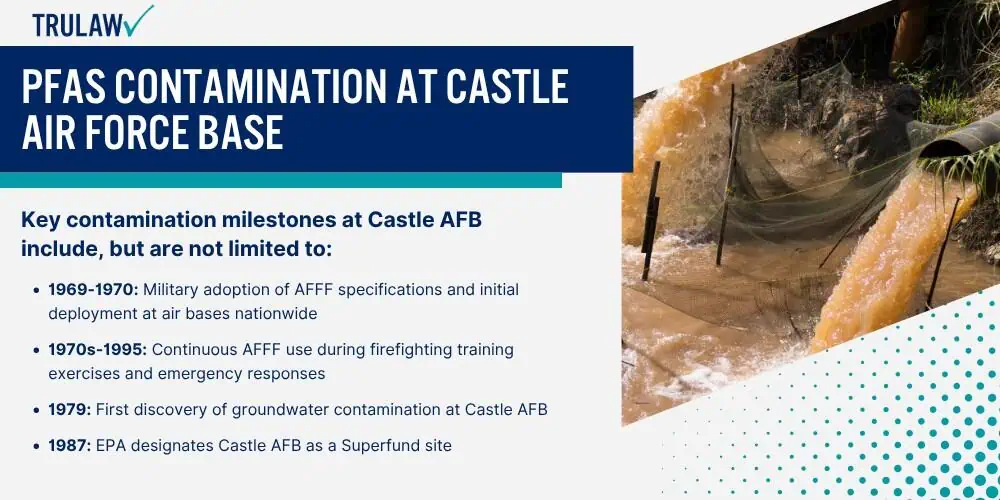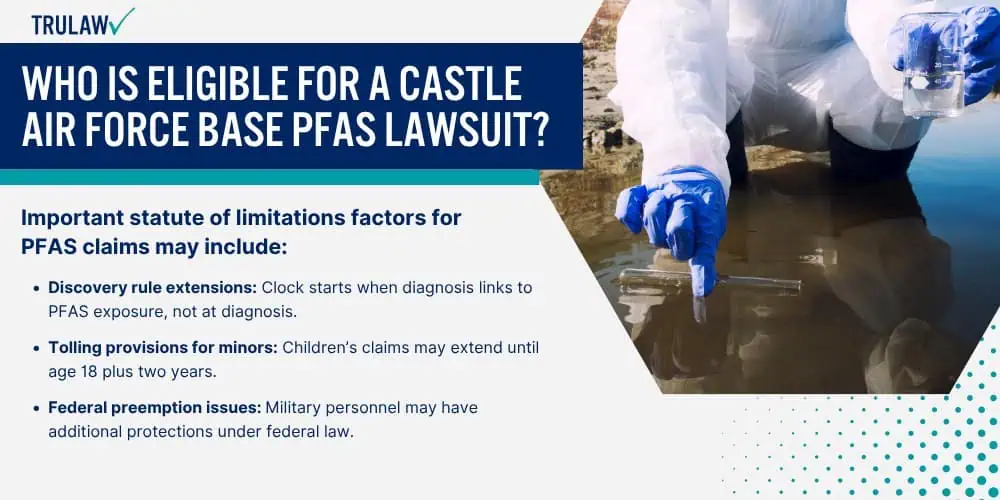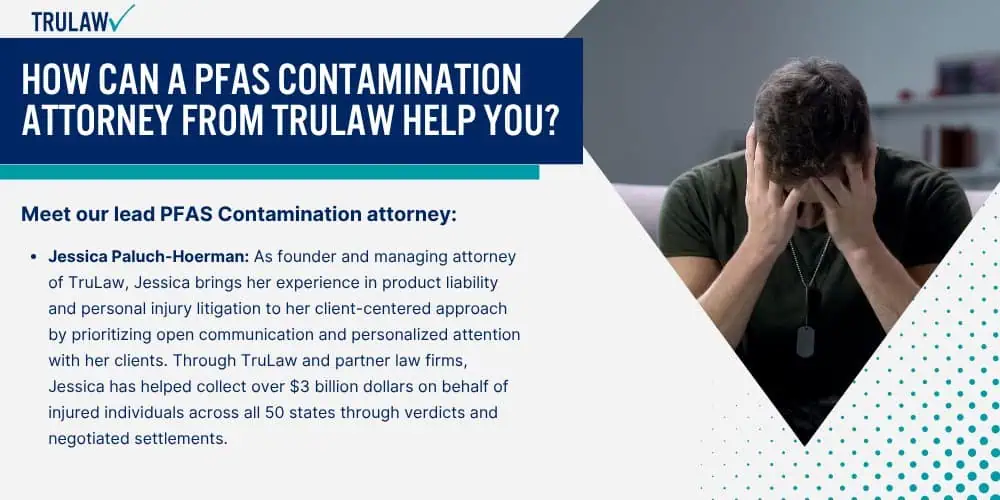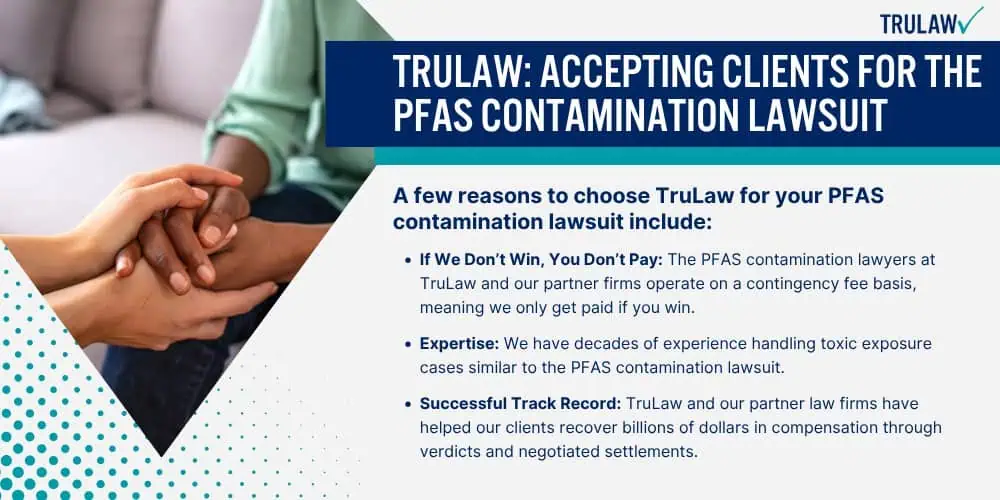Castle Air Force Base has recorded PFAS levels of 2,598,770 parts per trillion (ppt), which exceeds EPA safety limits by an astounding 37,000 times, making it one of the most severely contaminated military sites in the United States.
This extreme contamination resulted from decades of Aqueous Film-Forming Foam (AFFF) use during firefighting training exercises and emergency responses from the 1970s through the base’s closure in 1995, as documented by the EPA’s Superfund site records.

The History and Extent of PFAS Contamination
Castle Air Force Base operated as a Strategic Air Command training facility from 1941 to 1995, during which routine firefighting exercises using AFFF created persistent environmental contamination from toxic substances that continues affecting groundwater and surrounding communities today.
The military adopted AFFF specifications requiring its use in 1969, leading to widespread deployment at Castle AFB throughout the 1970s for both training drills and actual aircraft fire emergencies, according to Department of Defense PFAS reporting.
Key contamination milestones at Castle AFB include, but are not limited to:
- 1969-1970: Military adoption of AFFF specifications and initial deployment at air bases nationwide
- 1970s-1995: Continuous AFFF use during firefighting training exercises and emergency responses
- 1979: First discovery of groundwater contamination at Castle AFB
- 1987: EPA designates Castle AFB as a Superfund site
- 1995: Base closure on September 30, but contamination persists
- 2020-2024: Testing reveals PFAS levels at 2,598,770 ppt
Castle AFB’s contamination level of 2,598,770 ppt represents one of the highest PFAS concentrations documented at any U.S. military facility, surpassing many other severely contaminated bases by orders of magnitude.
This extraordinary contamination resulted from the base’s role as an aircrew training facility where AFFF was routinely used in fire suppression system testing, hangar deluge systems, and crash rescue training scenarios during military operations.
How Military Personnel and Families Were Exposed
Military personnel and their families stationed at Castle AFB were exposed to harmful substances primarily through contaminated drinking water systems that served base housing, workplaces, and recreational facilities.
For decades, service members and their loved ones unknowingly consumed water containing PFAS levels thousands of times higher than current safety standards, with exposure occurring through everyday activities like drinking, cooking, and bathing, as confirmed by California Water Board testing requirements.
Primary exposure pathways at Castle AFB included, but were not limited to:
- Base housing water systems: Contaminated groundwater supplied residential units where families lived
- Workplace drinking fountains and facilities: Personnel consumed PFAS-laden water throughout duty hours
- Recreational facilities: Swimming pools, sports complexes, and dining facilities used contaminated water
- Direct occupational exposure: Firefighters and maintenance crews handled AFFF during training and emergencies
- Groundwater migration: Contamination spread to private drinking water wells in the surrounding Atwater community
- Surface water runoff: PFAS-contaminated foam migrated through drainage systems to nearby properties
Long-term Castle AFB residents and workers face particularly elevated health risks due to prolonged exposure duration and the bio-accumulative nature of toxic chemicals, which build up in the body over time.
Veterans who served multiple tours at Castle AFB or lived in base housing for extended periods accumulated higher PFAS body burdens, increasing their likelihood of developing serious medical conditions years or decades after service.
Current Cleanup Efforts and Environmental Status
The EPA’s Superfund designation in 1987 initiated decades of investigation and remediation efforts at Castle AFB, with the Air Force investing millions in cleanup technologies and providing alternative water sources to affected residents, as detailed in EPA’s site schedule.
Despite these efforts, the persistence of PFAS chemicals means contamination remains a serious concern, with groundwater plumes and contaminated soil continuing to migrate and impact surrounding communities.
The contamination remediation timeline reflects both completed actions and ongoing initiatives:
- 1987: EPA National Priorities List designation triggers formal cleanup requirements.
- 1990s-2000s: Initial site investigations and groundwater monitoring well installation.
- 2006-present: Implementation of pump-and-treat systems for contaminated groundwater.
- 2020: DoD prohibited AFFF use in training exercises, limiting to actual emergencies only.
- 2024: Full phase-out of legacy AFFF planned, replacement formulations under development.
- 2025-beyond: Long-term monitoring and emerging treatment technologies deployment.
Current remediation technologies face limitations in addressing PFAS contamination, as these “forever chemicals” resist breakdown and require specialized treatment methods that remain costly and incomplete.
The Air Force continues investing in advanced treatment systems including granular activated carbon filtration and ion exchange technologies, yet complete remediation may take decades given the extensive contamination and PFAS persistence in the environment.







